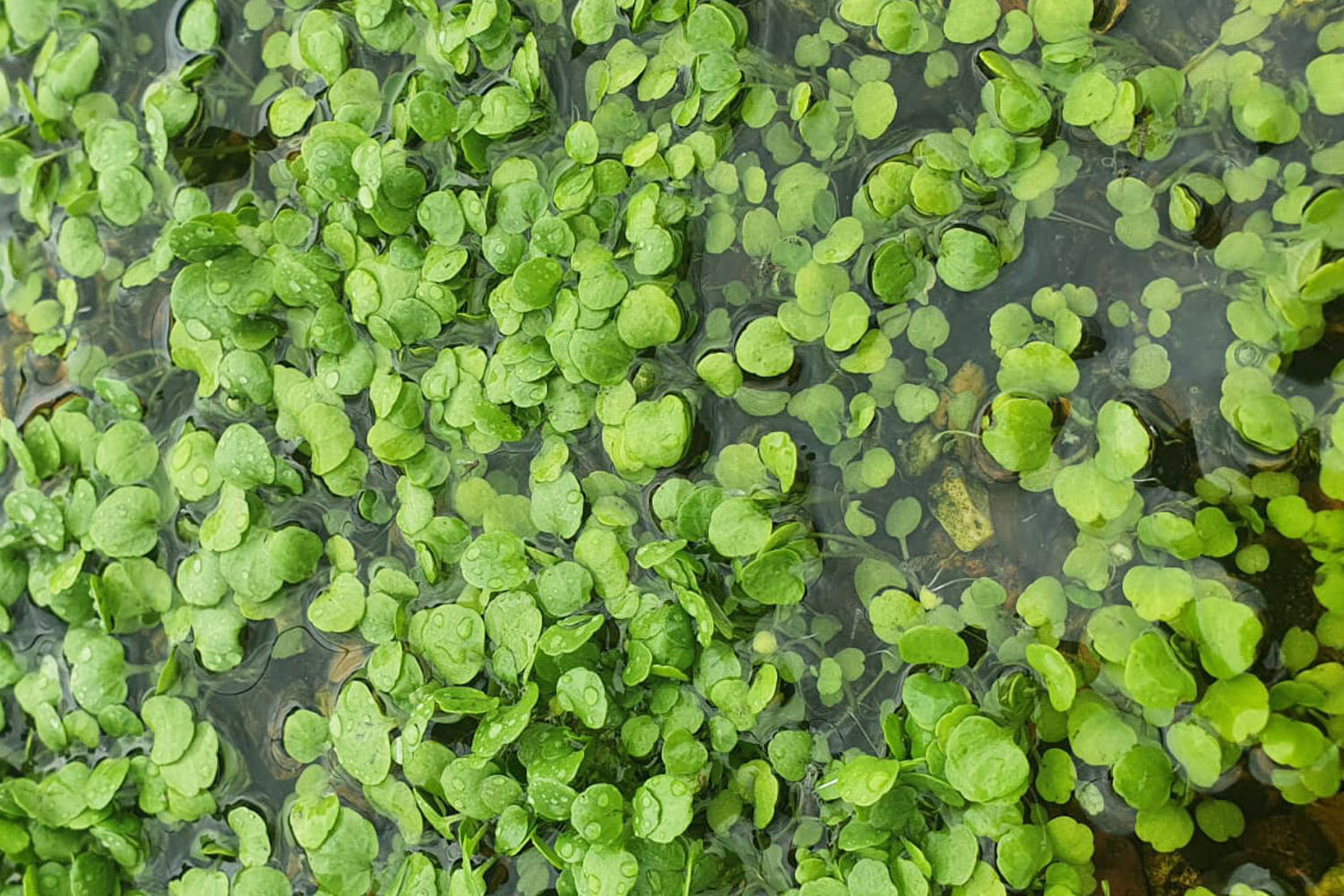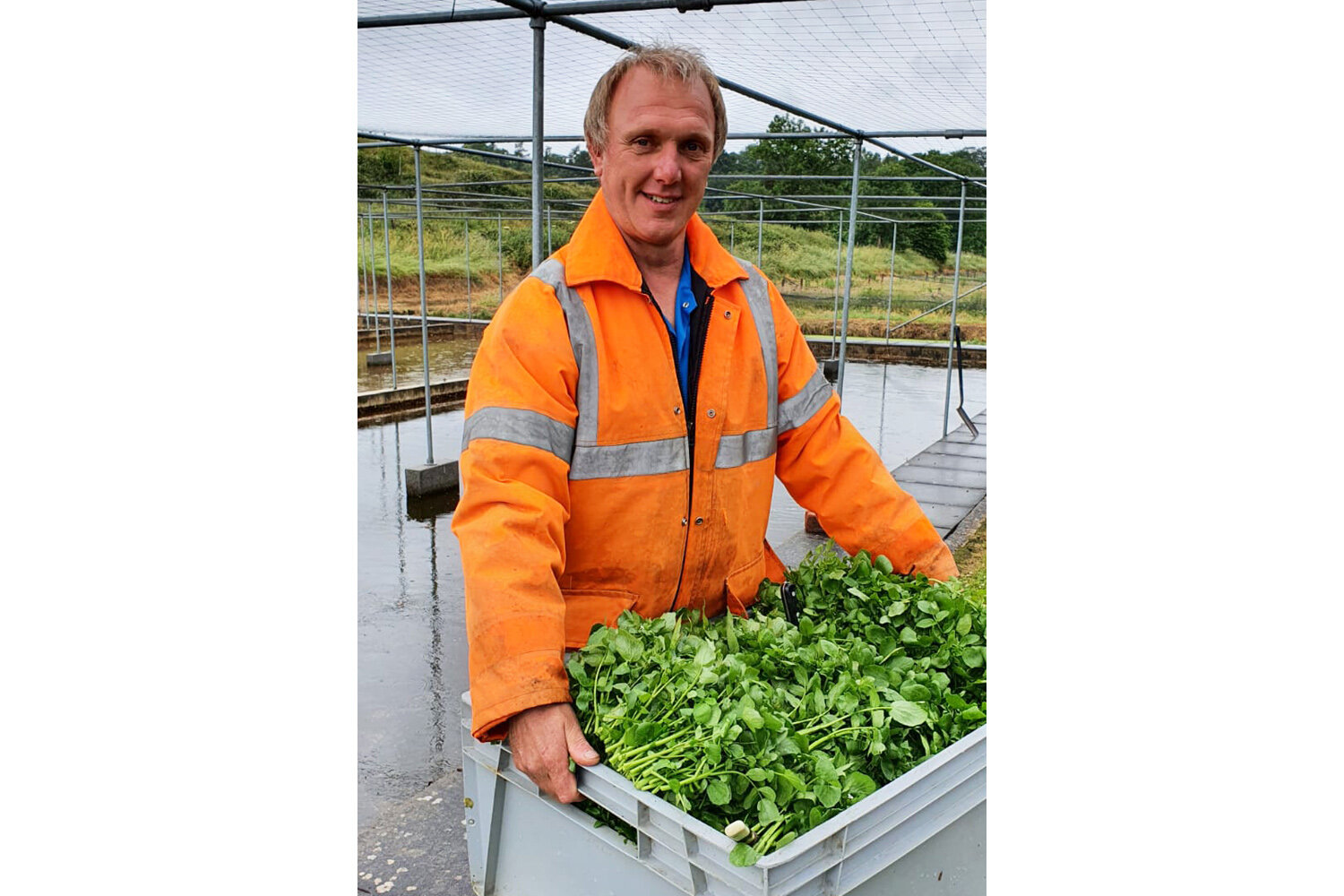Kingfisher Watercress
Growing watercress since 1854 … that’s quite a heritage. Our grower uses no fertilisers or insecticides - just pure artesian spring water.
Growing watercress since 1854 … that’s quite a heritage. Our supplier Barrie Arminson has spent a lifetime tending his watercress beds in Surrey, fed by artesian spring water and cultivated with zero fertilisers or insecticides.
Authentic watercress is a native British ingredient. Historically, it one was one of the few salads available in the colder months and an essential source of nutrients. It is said that during the Victorian era the public ate one million bunches per day.
Proper watercress is grown in special beds, fed with spring water, where the plant sends down both deep roots and roots that float near the surface. (Land cress, which is grown out of the water, is a far inferior product.)
From left: Marcus from Le Marche, Barrie, and Ben from Le Marche.
The plant is harvested by hand. You use each finger to clamp your cut of watercress until you have a ‘hand’ of cress.
As his website states, as a boy Barrie “learnt everyone had jobs to do, he would winnow the watercress seed while his sister Celia stencilled the company name on watercress boxes and brother Duncan studiously worked in the greenhouses.”
On our recent visit to the farm, Barrie described how decades ago Easter weekend was his busiest time of year. “It was the first holiday most people had off since Christmas … So Easter weekend was very busy with people who wanted to do something. They often had picnics. So what would you buy for a picnic? At that time of year it was only watercress, mustard and cress and celery.”
Barrie remembers filling up the railway carriage with three tonnes of watercress to supply demand in the capital. The steam engine arrived at 3pm on a Friday and took his precious crop direct to London Bridge.
We think this watercress is second to none ….. Fancy a sample? Get in touch.
Beausse Salads
Beausse is a sensational salad grower based 40km outside of Paris. Varieties of baby leaf include orach, yellow chard, purslane and salsola.
Located just 40km outside of Paris, Beausse supplies salad leaves of sublime quality including niche varieties such as orach, yellow chard, purslane and salsola. The family business was established in 1974. The range expanded hugely after trials by Julien, the son of Marc Beausse, who experimented with different varieties and growing techniques - even inventing a bespoke machine to harvest baby leaves in the field.
Credit: Beausse
Beausse is based in Chailly-en-Biere, a region that shares the Paris terroir and has supplied the capital for centuries.
Credit: Beausse
Crops are started under cloches, which are removed once the seedlings are established. This grower only use natural and organic fertilisers. Crops are harvested to order and then hydrocooled - making these the freshest and best salads we know.
Credit: Beausse
Annabel's Strawberries
We are the exclusive London suppliers of Annabel’s spectacular strawberries - picked to our exact specification.
Le Marché was Annabel Makin-Jones’ first customer. Now production is around 500 tonnes per year under the brand name Annabel's Deliciously British.
The strawberries are typically delivered to Le Marché within 18 hours of picking. The key varieties grown are Malling Centenary, Malling Allure and Malling Ace.
Once picked, the fruit is immediately put in a chiller to take the temperature down from 28 Celsius to 2 Celsius in 30 minutes. “It sets the skin so you don’t get the bruising and gives you a longer shelf like,” explains Annabel.
The fruit is grown hydroponically on ‘table tops’ in polytunnels and irrigated with rainwater from a 20-million gallon lake on the farm. There is an apiary on site to provide bees to assist with pollination. Solar panels generate sustainable energy for the office and packhouse.
Packaging is biodegradable - with cardboard punnets - and surplus or misshapen fruit is used to make her range of conserves and sparkling drinks under the brand name Tame and Wild. Other fruit waste is used to power her packaging supplier’s anaerobic digester.









